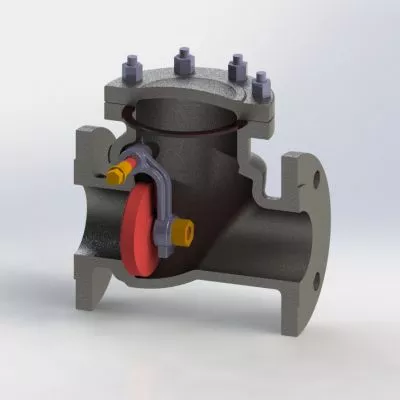Seal form and its sealing performance of forged valves-part one
There are three sealing parts of the forged valve:
That is the contact between the sealing surfaces of the opening and closing member and the valve seat; the joint of the packing with the valve stem and the stuffing box; the connection between the forged valve body and the forged valve cover. The leakage in the former place is called inner leakage, which is commonly referred to as the lack of tightness, and will affect the ability of the forged valve to cut off the medium. For forged shut off valves, internal leakage is not allowed. The latter two leakages are called outside leakages, that is, the medium leakage from the inside of the forged valve to the outside of the forged valve.
External leakage can cause material loss, pollute the environment, and cause serious accidents in severe cases. For flammable, explosive, toxic or radioactive media, external leakage is not allowed, so the forged valve must have a reliable sealing performance.
Dynamic seals
A forged valve dynamic seal mainly refers to the valve stem seal. It does not allow the medium inside the forged valve to leak with the movement of the valve stem, which is the main subject of forged valve dynamic sealing.
Stuffing box form: forged valve dynamic seal, mainly stuffing box. The basic form of the stuffing box is:
1. Gland type: This is the most commonly used form.
The unified form can be distinguished in many details. For example, as far as the compression bolt is concerned, T-bolts (for low pressure forged valves with working pressure less than 16kg/cm2), double end bolts and swing bolts are available for use. In terms of the gland, it can be divided into integral type and combined type.
2. Compression nut type: This seal form is of small size and limited compression force, so only applicable to small forged valves.
Stuffing: Inside the stuffing box, the stuffing is directly in contact with the valve stem and the stuffing box is filled with the stuffing to prevent leakage of the medium. The following requirements are imposed on the stuffing:
Good sealing;
Corrosion resistant;
Small friction coefficient;
Comply with media temperature and pressure.
Bellows seals:
With the increase of flammable, explosive, highly toxic, and radioactive materials, the chemical industry and the atomic energy industry have grown rapidly. As a result, there are more stringent requirements for forged valve sealing. Some places have no way to use packing seals, and a new seal form has emerged. - Bellows seal. This type of seal does not require a packing, which is also called a packing-free seal.
The two ends of the bellows are welded to other parts. When the valve stem is lifted and lowered, the bellows expands and contracts. As long as the bellows themselves does not leak, the medium cannot be released outwards. For the sake of safety, a double seal of bellows and packing is often used.
